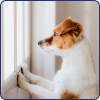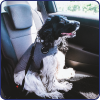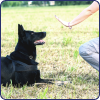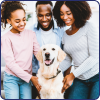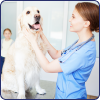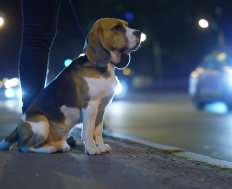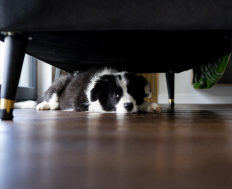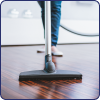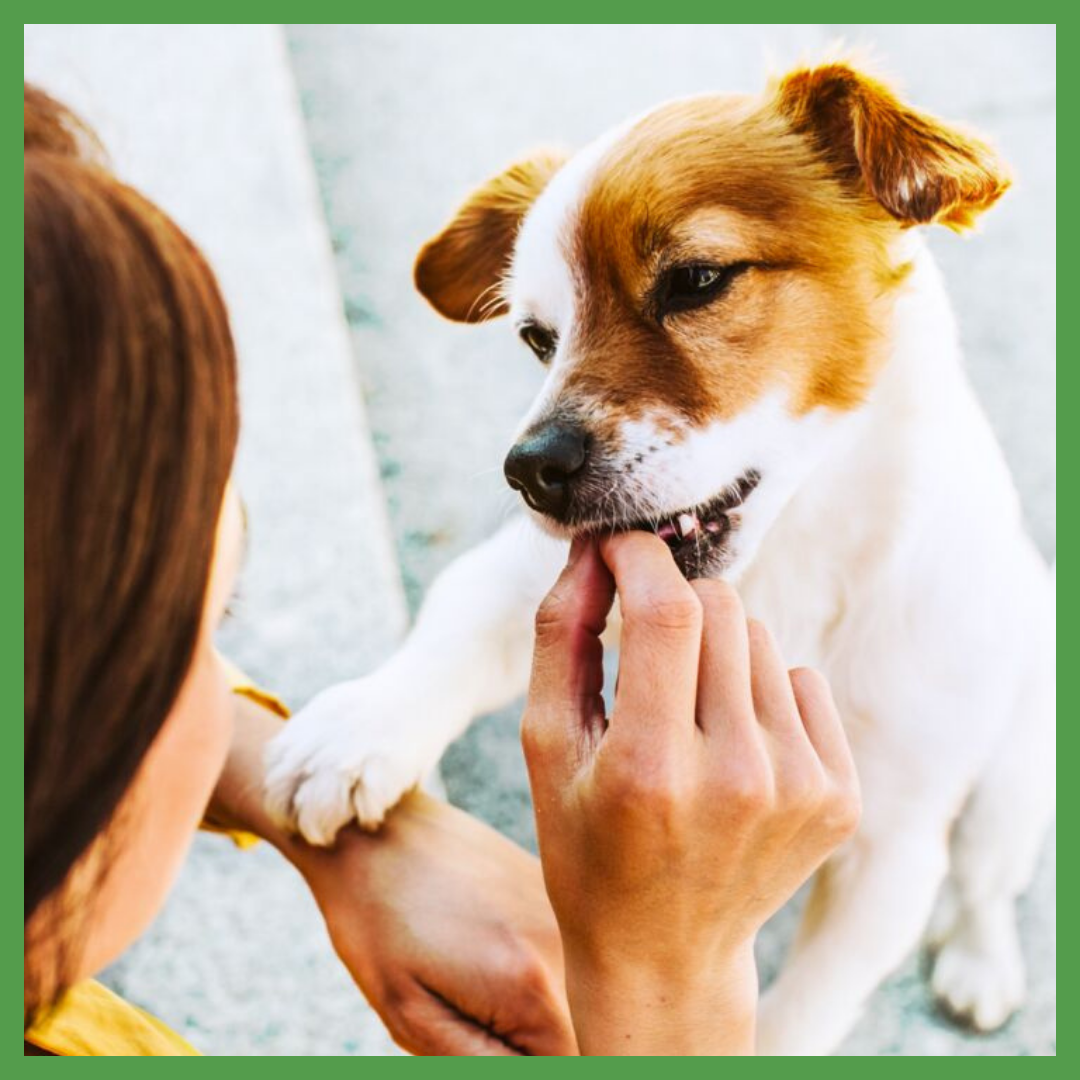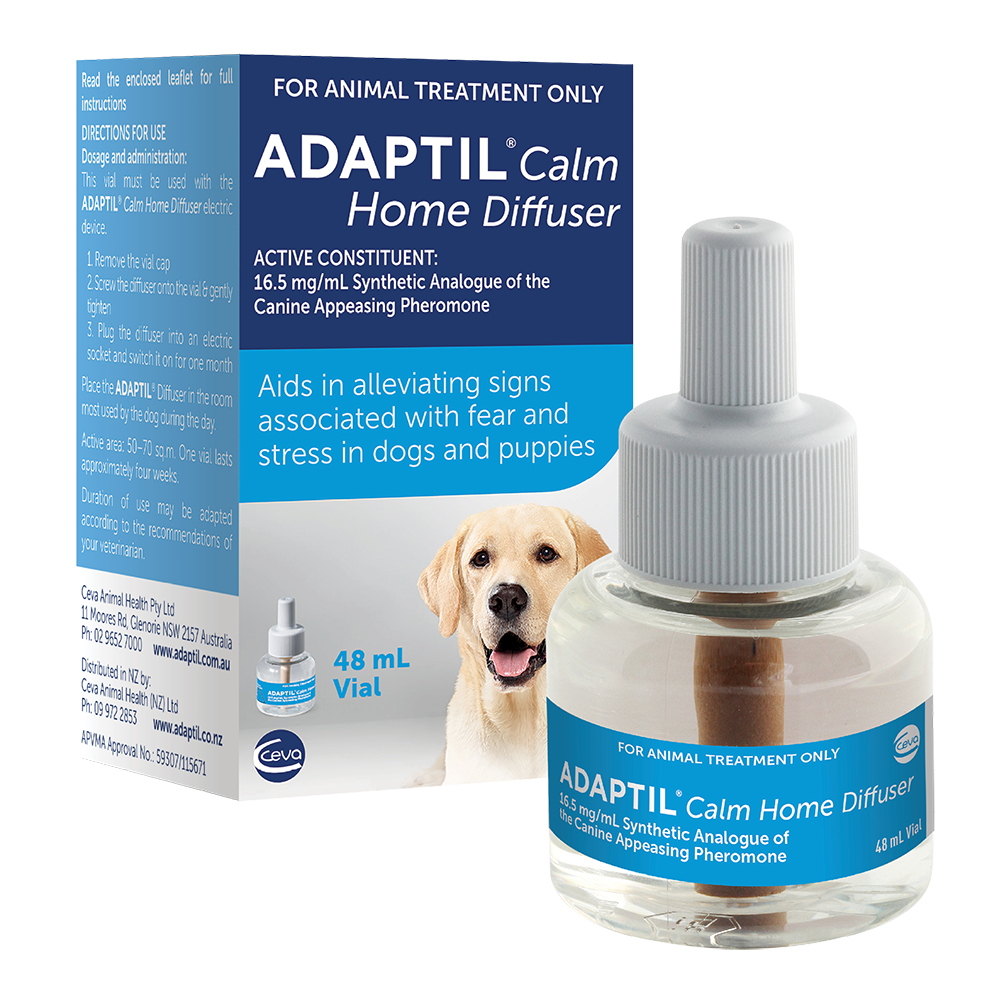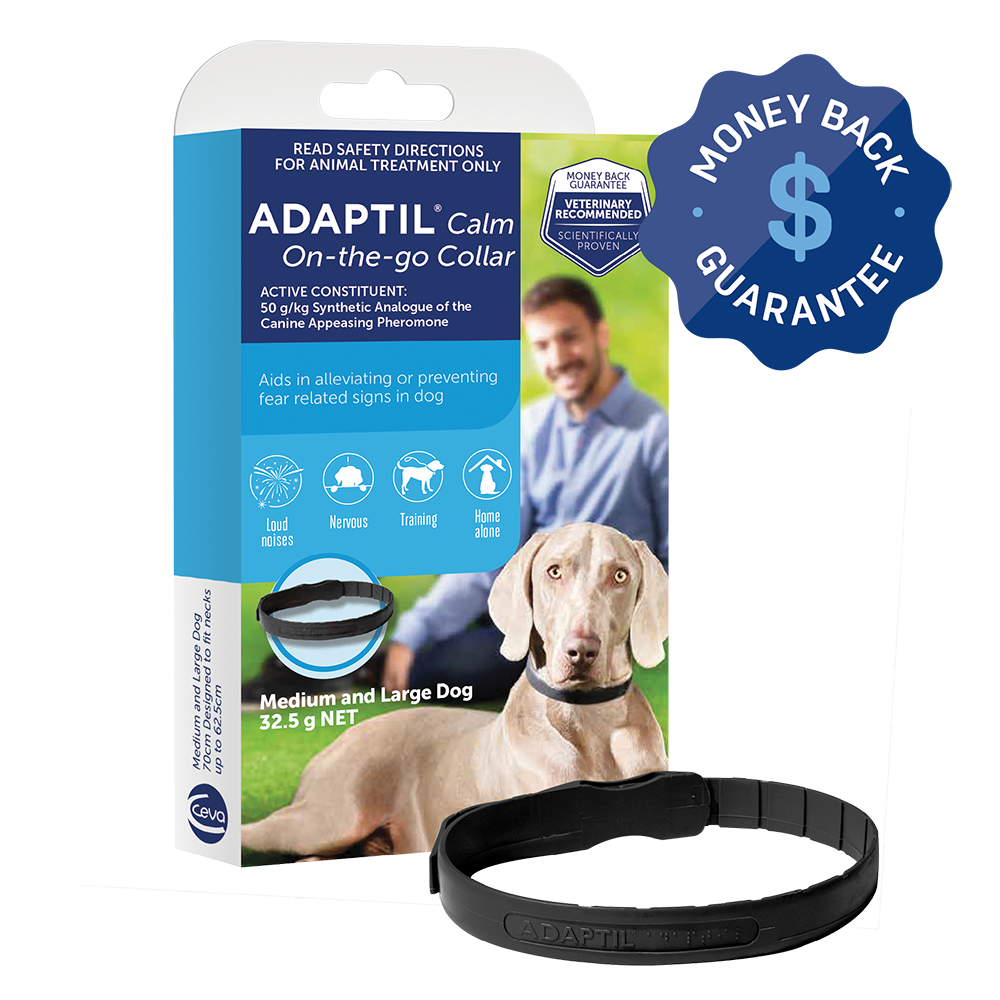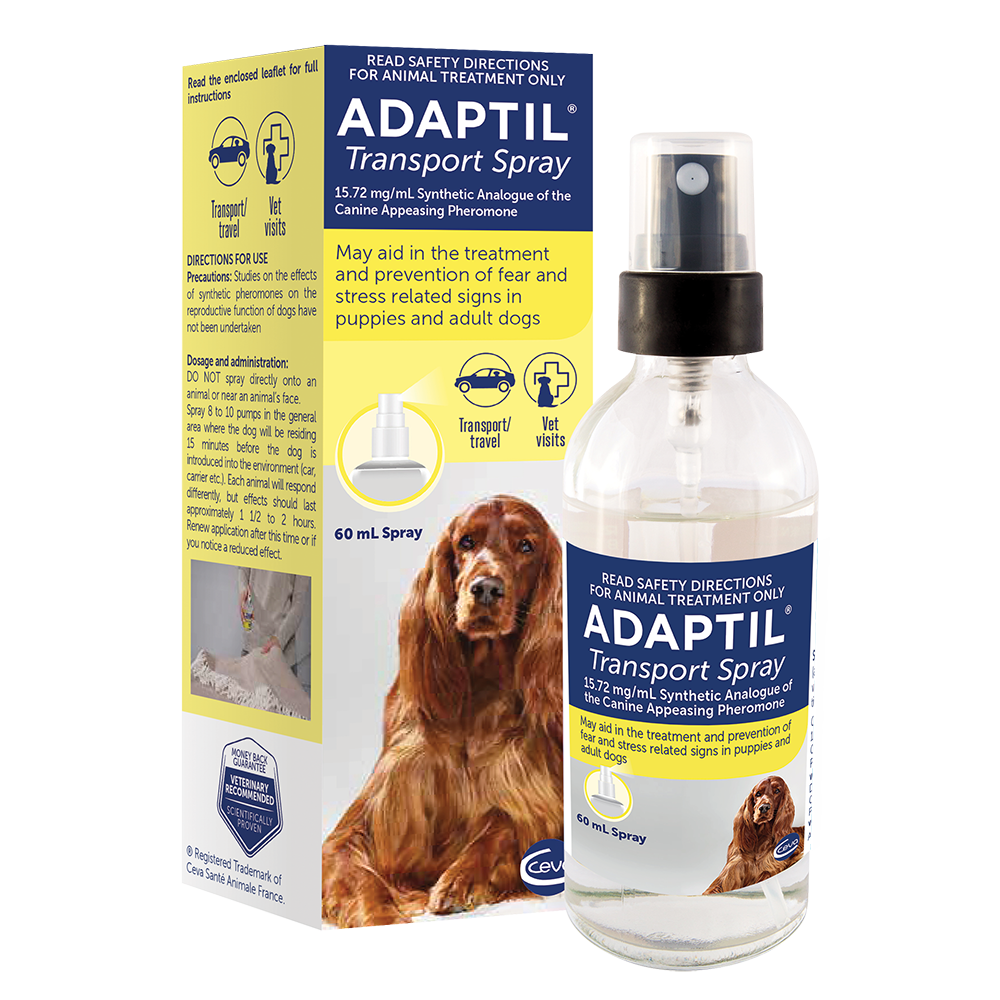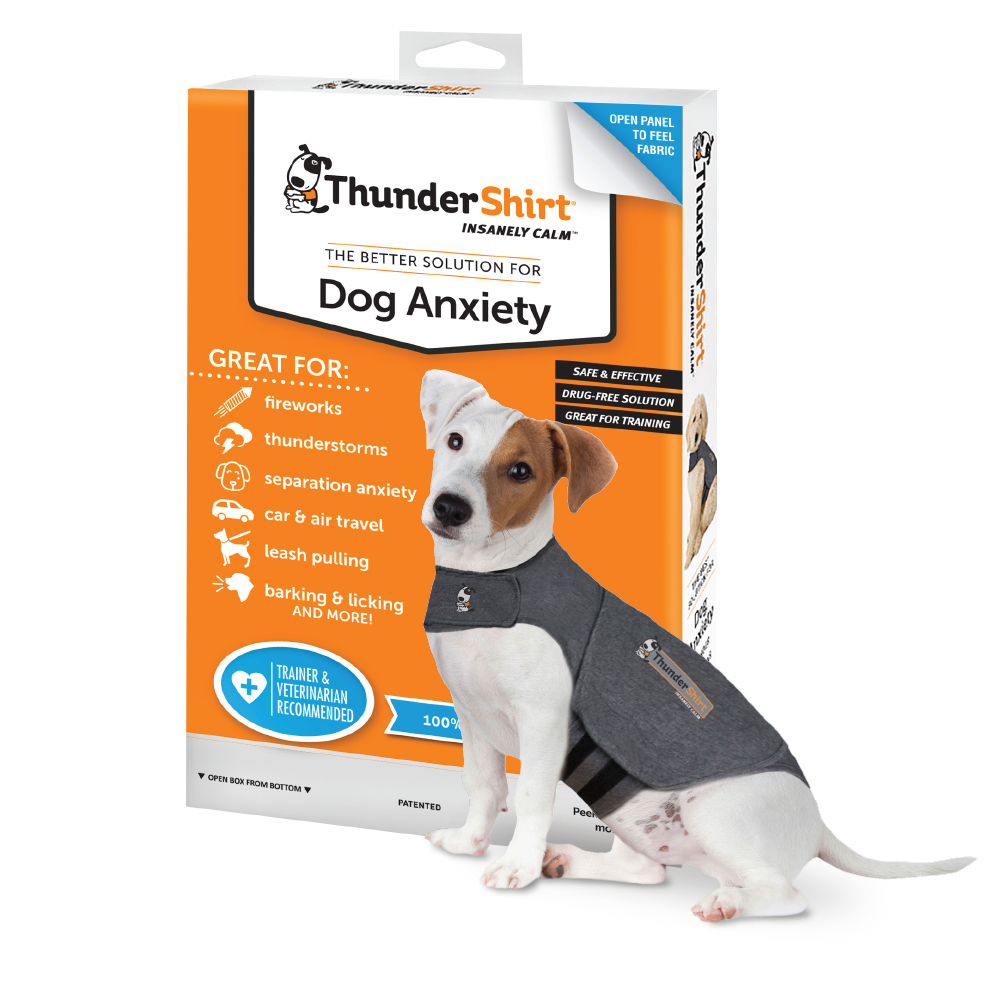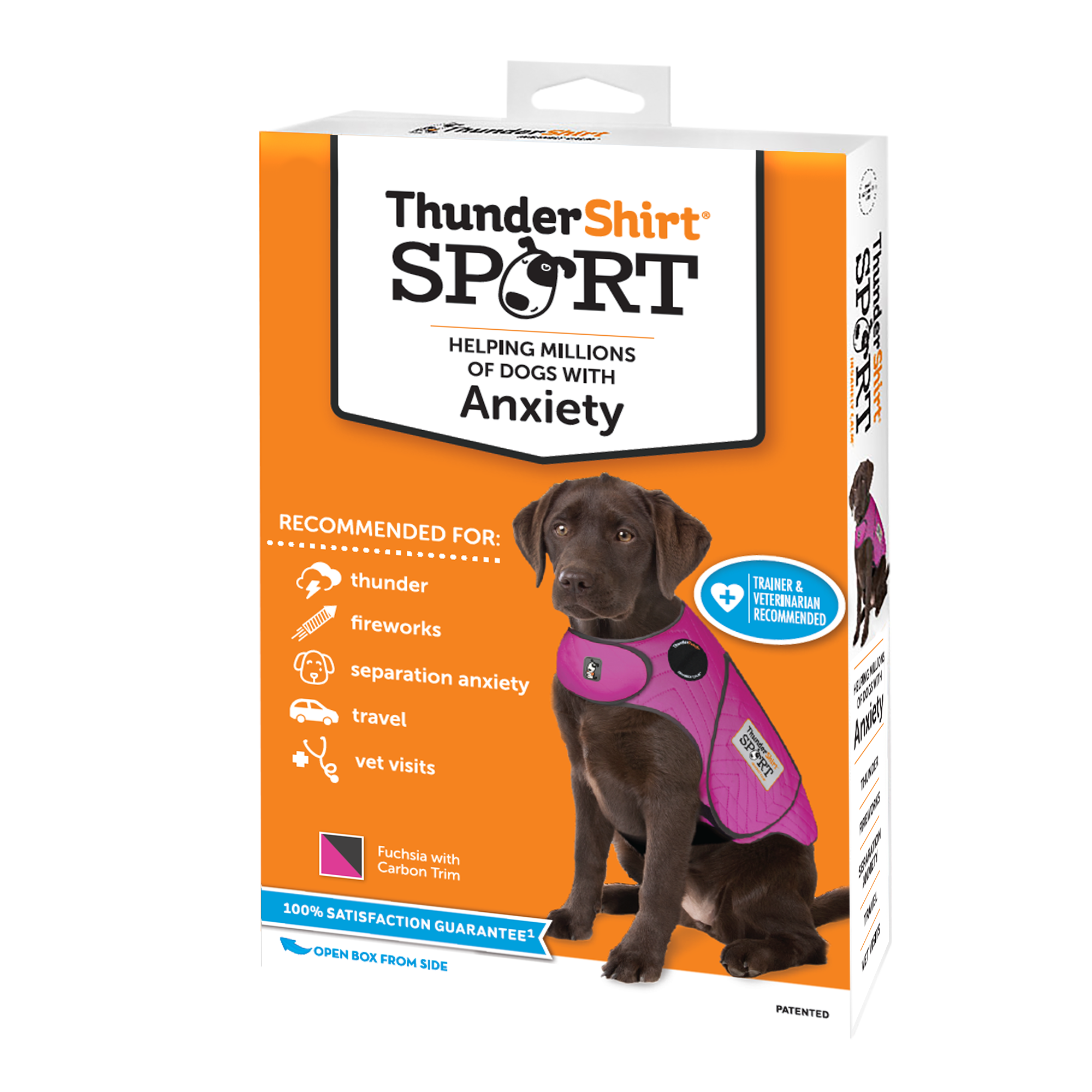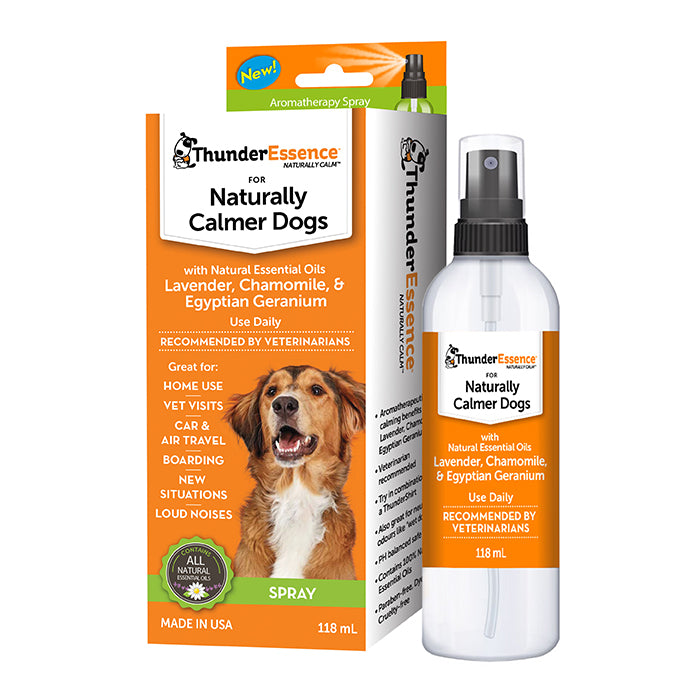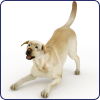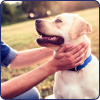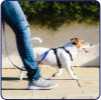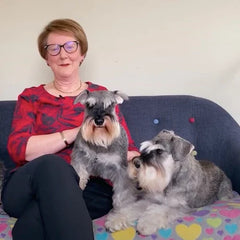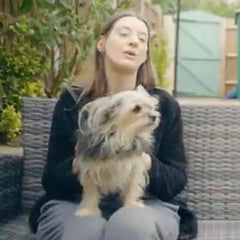HOW TO HELP YOUR moderately anxious dog
-
Why is my dog anxious?
- Some dogs struggle with many things in their lives, they are just generally anxious and need support in many situations.
- Try our calming solutions to help your anxious dog!
-
Solutions for your anxious dog
- If your dog needs constant support, try ADAPTIL Calm Collar, clinically proven to help dogs facing stressful situations.
- ADAPTIL Calm collar releases ‘appeasing pheromones’ that provide continuous reassurance for your dog.
- Used and recommended by veterinarians.
- Sometimes nervous dogs just need a little help, and this unique vest applies a gentle pressure on your dog's body for a better relaxation, like swaddling a baby.
- ThunderShirt is vet recommended and has helped 1M+ dogs worldwide.
-
Regular exercice and activities
- Behaviourists recommend developing a routine for your dog. This can help them predict events throughout the day.
- Be consistent.
- Do not overload your dog.
- Reward with your dogs favourite things – e.g. only use their favourite treat when
training for the anxiety.
-
Continue to be your dog's best friend
- You will have good and bad days; the important thing is to keep going to try and help your dog feel more comfortable.
- Learn how to recognise the signs of dog anxiety - as each dog is different and recognising these signs early is key!
- Tackling the anxiety as soon as possible is best.
We recommend:
If your dog needs constant support. Appeasing Pheromones everywhere your dog goes
If your dog needs help at specific times. Wrap around your dog's body, for immediate calming effect
-
Recommended by vets
-
25 clinical studies published
-
20+ years of expertise
Tips to help your dog cope with anxiety
Many dogs suffer from anxiety. It's much more common than it might seem. Our modern life can affect dogs - we live busy, noisy lives and expect our dogs to fit in with our expectations.
Sometimes, the circumstances of a dogs upbringing can lead to general anxiety e.g. life before your home or circumstances to breeding.
First of all, try to understand what causes your dog's stress. Read on for tips to help you reduce your dog's anxiety.
What are the most common signs of anxiety?
The common signs of anxiety or fear include: barking, shaking, scratching or licking themselves, pacing or restlessness, chewing, panting, drooling, toileting in the house.
What causes anxiety?
There are numerous reasons a dog can be fearful, including:
- Upbringing, some dogs are just genetically nervous and there is not always an obvious cause,
- Not socialised enough when young,
- Being left home alone can trigger separation related problems,
- Loud noises, such as fireworks or thunderstorms,
- A big change at home (a baby, someone leaving...), a new pet,
- Visitors,
- Car rides can be stressful, as the movement may be unsettling, and there are different sounds and the outside whizzes by,
- Vet visits can be linked to an unpleasant experience,
- Sometimes older dogs may experience a gradual loss of awareness, memory and perception, which may make them confused and anxious.
For dogs, socialisation training as a puppy is the best way to prevent later anxieties and fears.
Expose your dog to a wide range of situations, people and experiences in a gradual and positive way. This builds positive associations and helps them develop into well-balanced, confident dogs that are able to cope with new situations, rather than react fearfully to them.
So what can you do to reduce your dog's anxiety?
Talk to a professional.
It is important to check there isn't an underlying medical problem affecting your dog e.g. pain can be a reason for many behavioural issues in dogs. Your vet or an accredited behaviourist can help you identify the possible triggers and underlying issues connected to your dog's anxiety.
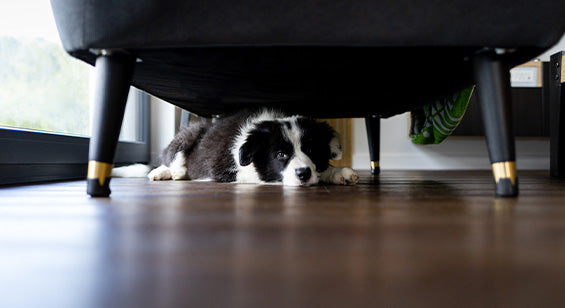
Try to spend more time with your furry friend. It will help them for sure. The bond between you means that your dog values your presence, so being with them is beneficial for their mental health.
You can help your dog by creating a safe space at home for them to escape to when needed and relax undisturbed.
Routine exercise and activities are great to use some energy, keep their brain active and have fun together! Play and enjoy spending time together!
Read how to recognise the signs of anxiety in your dog for more information and tips to support your dog.
How to use ThunderShirt and ADAPTIL Calm Collar?
Our Dog trainer recommends to combine both solutions if you have a very anxious dog. "They work differently and can help manage signs of stress and anxiety."
The best way to help your anxious dog is usually through a combination of preventative strategies, training and generally building their confidence.
Get them used to wearing a ThunderShirt, make sure they do not associate ThunderShirt with only this issue.
Frequently Asked Questions - Generally Anxious Dogs + Solutions
WHAT ARE THE MOST COMMON SIGNS OF ANXIETY?
WHAT CAUSES ANXIETY?
WHAT CAN I DO TO HELP MY DOG'S ANXIETY?
WHY IS MY DOG SHOWING SIGNS OF ANXIETY?
HOW DOES A CALM COLLAR WORK?
WHAT SIZE CALM COLLAR DOES MY ANXIOUS DOG NEED?
HOW DOES A THUNDERSHIRT HELP A VERY ANXIOUS DOG?
HOW TO USE THUNDERSHIRT AND ADAPTIL CALM COLLAR?
DOES CALMING MUSIC WORK FOR ANXIOUS DOGS?
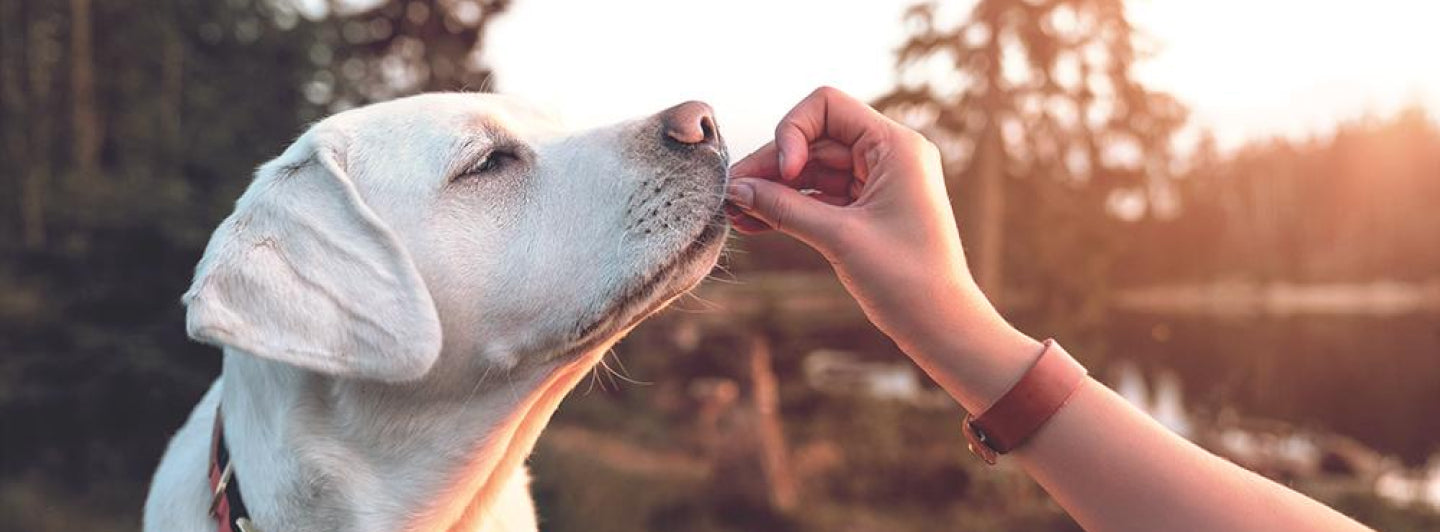
TESTIMONIALS
See how ADAPTIL helped these Dogs:
How to help your very anxious dog?
-
Talk with a professional
- Your vet, accredited behaviourist or accredited dog trainer will give you valuable advice on ways to support your dog.
- Learn to understand your dog’s body language.
- Understand what is underlying your dog's anxiety and what are triggers for them.
- Don't wait! Speak to a professional sooner rather than later for advice to best support your dog.
-
Use calming solutions
- To help your very anxious dog,use ThunderShirt calming pressure wrap, in combination with an ADAPTIL Calm Collar, clinically proven to help dogs facing stressful situations.
- Like swaddling an infant, a ThunderShirt provides gentle, calming pressure around your dog’s torso, helping to soothe their anxiety.
- ADAPTIL CalmCollar releases ‘appeasing pheromones’ that provide continuous reassurance for your dog.
-
Keep cool and positive
- Pets suffer with anxiety everywhere and all year round. It can be due to many reasons such as travelling, meeting new people, going to the vets, fears of loud noises, vacuum cleaners, living in a changing environment...
- Many solutions exist, but it can take time to find the right one for your dog. Don't give up!
- Take a look at our Calming Music for Dogs Playlist for hours of relaxing sounds.
We recommend:
To wrap around your dog's body, for additional calming effect when needed
Appeasing Pheromones for constant calming everywhere your dog goes

TESTIMONIALS
See how ThunderShirt helped these Dogs:

